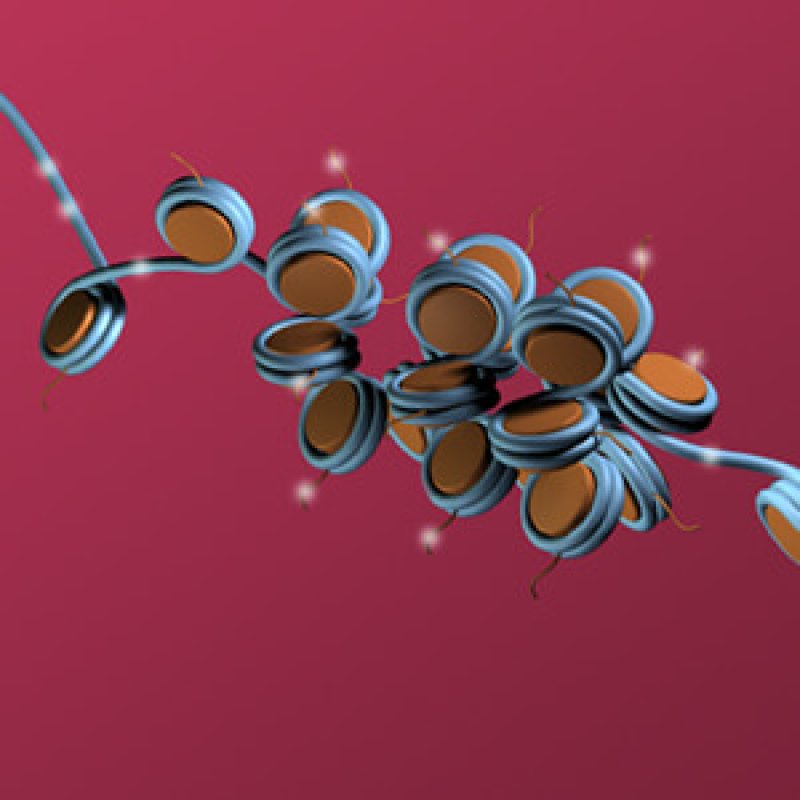The human body has an unprecedented capacity to move genetic material from place to place, including a packaging and delivery system that helps whether or not you will develop cancer or not.
One area of interest focuses on histones, the chief component of chromatin, which is a cluster of large molecules that are thought to lead to DNA damage such as with cancer. Researchers have found a possible new way of manipulating chromatin and its histones through a protein reader known as the YEATS domain protein. Protein readers attach to histone “tails” and play an important role in gene activation.
When DNA wraps around histones much like baling twine on a spool, they form a larger collection of DNA-wrapped histones called nucleosomes. Nucleosomes are further packaged into chromatin containing DNA, protein and RNA. Chromatin’s role is to shrink DNA to fit into a cell thus preventing DNA damage and allowing healthy cell division through controlled gene expression. Certain histone modifications such as acetylation and methylation are critical to chromatin’s performance.
“These histone modifications serve as docking sites for reader proteins which recognize specific modifications and influence downstream biological outcomes,” said said Xiaobing Shi, Ph.D., assistant professor of epigenetics and molecular carcinogenesis at University of Texas M. D. Anderson Cancer Center. “Compared with a great variety of readers that have previously been identified for histone methylation, few reader proteins that recognize histone acetylation are known.”
Staying in the package delivery metaphor, if the scanner doesn’t recognize the barcode on your package, things can go terribly wrong. In the case of something as crucial as DNA packaging and delivery, it could mean cancer. A family of histone acetylation readers called bromodomain was discovered about a decade ago and was thought to be the sole “reader” for histone acetylation, until now.
“Earlier identification of potent inhibitors target bromodomain proteins has proved histone acetylation readers to be attractive therapeutic targets,” said Shi. “Our findings add to this understanding by identifying the YEATS domains as yet another histone acetylation reader that we believe is connected to both healthy and potentially cancer-causing processes.”































